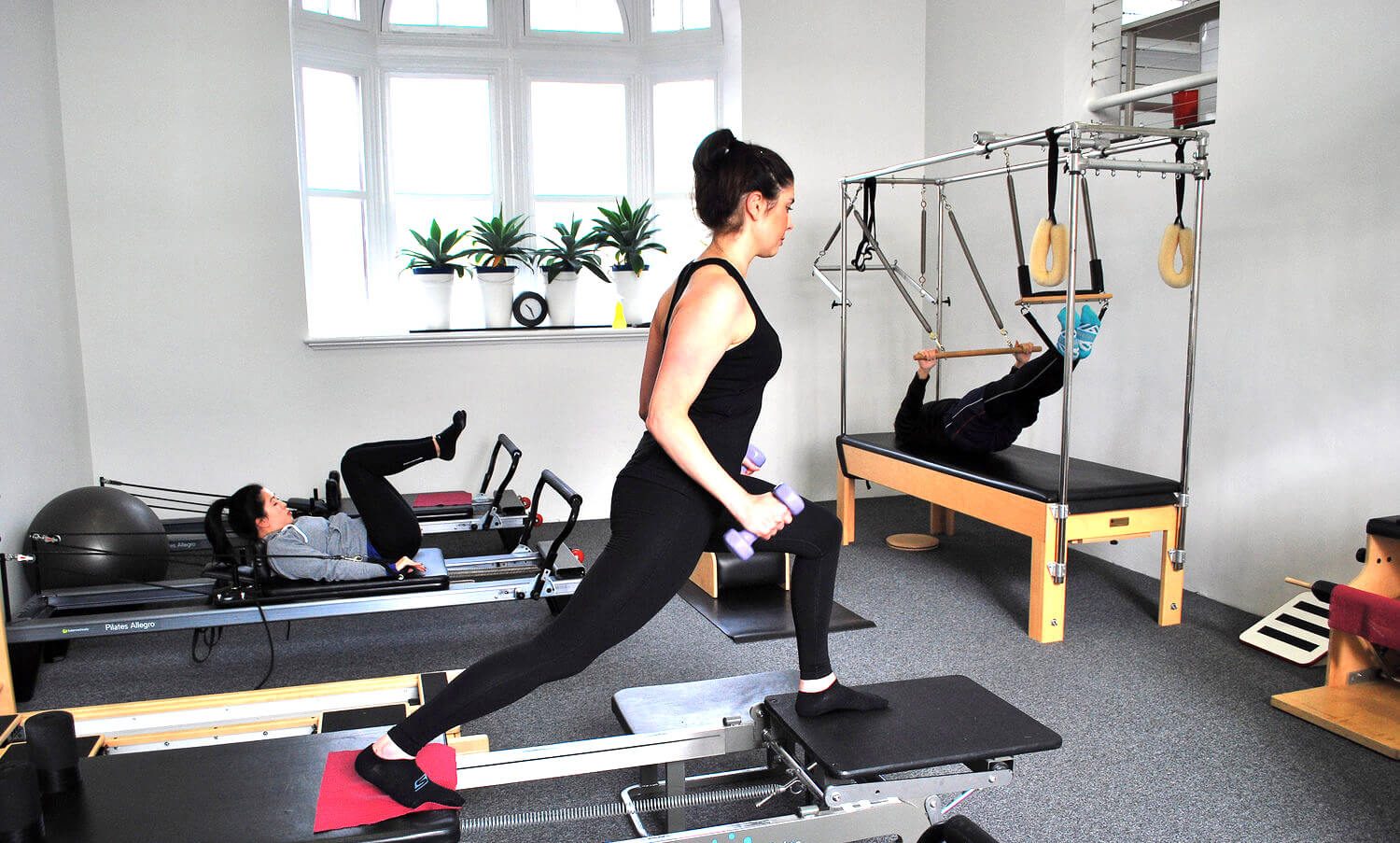Pilates has received mixed reviews over many years depending on where you read about it. You may hear claims by many models, celebrities and entertainers that daily Pilates is the way they stay looking the way they do. Others report that Pilates cured/caused their back pain. Some want to know whether Pilates will help or worsen their pelvic floor function. What about their prolapse? Yet again, others ask – What exactly is Pilates?
What is Pilates?
Pilates is a method of exercise developed by and named after Joseph Pilates, which targets the spinal, abdominal, and pelvic floor muscles, which, along with the diaphragm, are often termed ‘the core’. The focus is on body alignment, muscle balance and correct breathing technique, with the aim being to improve body awareness and control, strength and flexibility. Basically, the emphasis is on an understanding of how to move and efficiency of movement.
Joseph Pilates originally developed a system of exercises during World War 1 to help rehabilitate injured soldiers. Later in his life he moved to the USA where he opened his own studio, which became popular with dancers, athletes and entertainers and hence was more widely known. He died in 1967, however Pilates has continued to be taught in many countries around the world and was introduced to Australia in 1986.
Many methods of Pilates have been established, each one slightly different to the next. Very broadly speaking, ‘Traditional Pilates’ methods tend to stick a little more closely to Joe’s original teaching whereas ‘Clinical Pilates,’ or ‘Physiotherapy Pilates,’ often means that the exercises have been modified and take into account more recent research in the areas of musculoskeletal research.
Forms of Pilates: Mat or studio Pilates
Mat Class Pilates:
- Is suitable for those who are not injured,
- All exercises are performed on the mat with everyone doing the same thing,
- Correct ‘core’ activation is assumed,
- Class sizes vary greatly depending on available space,
- Generally, classes are specified as Basic/Beginner, Intermediate or Advanced,
- Speciality classes such as pregnancy or post-natal may be available,
- Some centres offer reformer classes where the same principles apply.
Studio Pilates:
- Is suitable for those who are injured and have specific rehabilitation needs, or those who require modification of the basic exercises such as the elderly, women who are pregnant or in the post-natal period, even elite athletes,
- Utilises equipment such as the Reformer, Cadillac (also known as the Trap Table), Wunda Chair, Spine Corrector and possibly others,
- Has a low client/instructor ratio to ensure close supervision and correct technique
- Each client has an individual exercise program which may be different at each session and modified and progressed according to signs and symptoms
- Ideally, each client has an individual initial assessment to determine focus areas and to ensure correct muscle activation. Commonly the real-time ultrasound is used. This is a similar type of ultrasound to that which is used for pregnant women. It is a very useful way of assessing correct pelvic floor muscle activation and assessing how the pelvic floor and abdominal muscles work together. If a client has difficulty in performing a satisfactory combined pelvic floor and abdominal muscle contraction, then he or she may be referred to a Physiotherapist who has post graduate training in Women’s, Men’s and Pelvic Health
Will Pilates help or hinder back pain / pelvic floor muscle dysfunction/prolapse?
Unfortunately, the answer is: It depends! Like any form of exercise, the way that you perform Pilates is crucial to gaining benefits. Some important considerations are:
- Correct core activation. This is particularly important with regards to the pelvic floor muscles. You must know that you are activating properly, and exercises must be prescribed that are appropriate for your level of function. If you are not performing an exercise properly you will not be gaining the maximum benefit from it, but more importantly, may be at risk of causing damage. This can occur for a few reasons:
- Pushing downwards (bearing down) through the pelvic floor muscles, instead of the correct action of squeezing and lifting, puts you at risk of developing a prolapse and bladder and bowel dysfunction,
- Performing abdominal exercises which are too loaded, especially those where the head is lifted or those which cause you to hold your breath. Basically what happens is that the abdominal muscles ‘overpower’ the pelvic floor muscles, putting them at risk as above
- In situations where the pelvic floor muscles are habitually held tightly, or have difficulties relaxing, the program will be quite different from someone who has weak pelvic floor muscles. Continued holding of these over-active muscles may actually make the problem worse
- Thorough initial assessment. This should involve both a real time ultrasound assessment and a movement assessment which will lead to a list of focus areas and your program can be developed from there. This applies to problems in all areas – from back pain to pelvic floor problems.
If you consider the factors listed above, you can see why it can be difficult to gain benefits by simply following a DVD or participating in a very large mat class prior to any other form of Pilates.
So, in summary, Pilates can be a very helpful form of exercise as long as you are:
- Activating your core correctly
- Performing exercises correctly that are appropriate for your level of function
- Performing exercises which have been correctly prescribed to assist with your signs and symptoms

